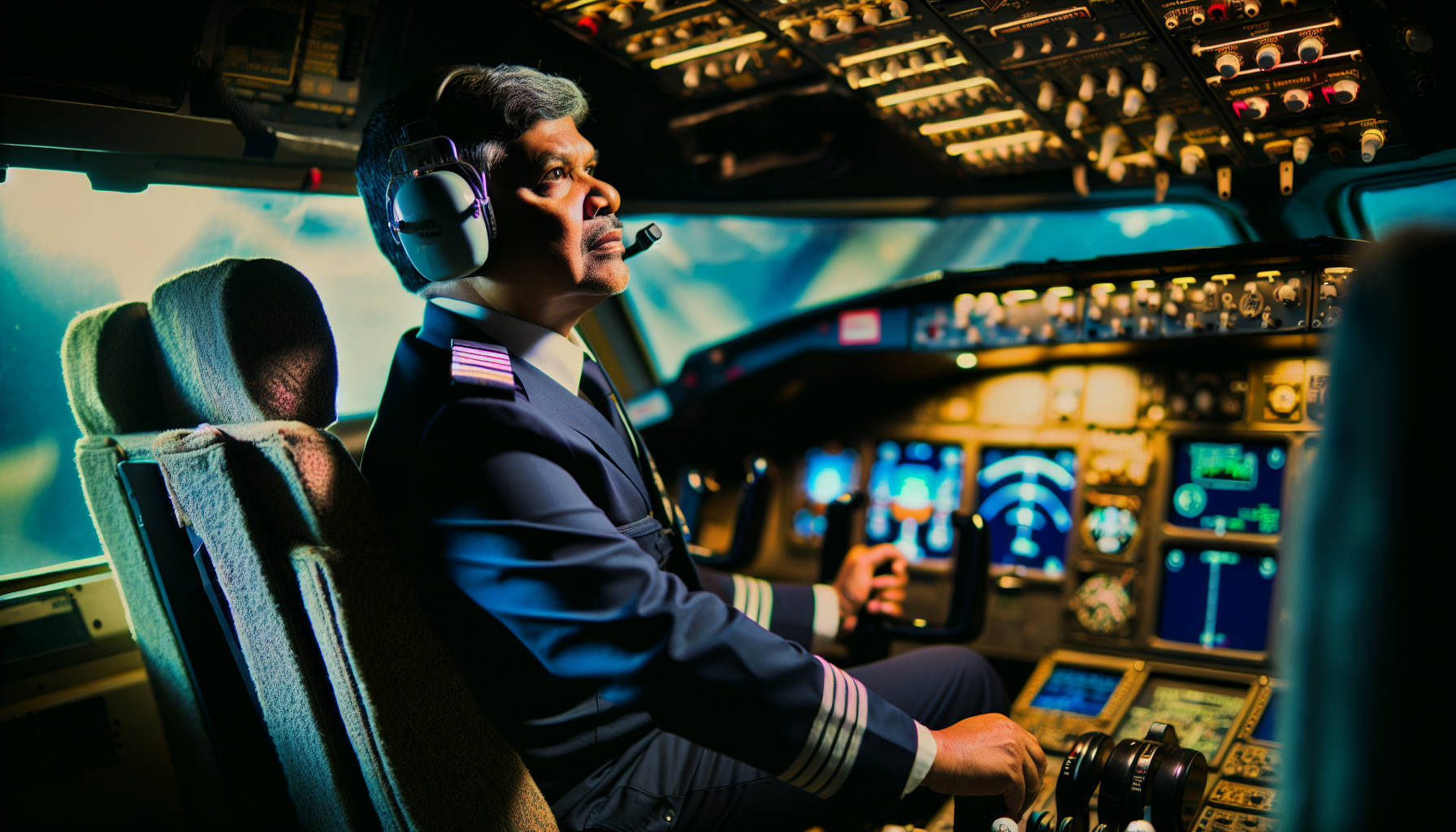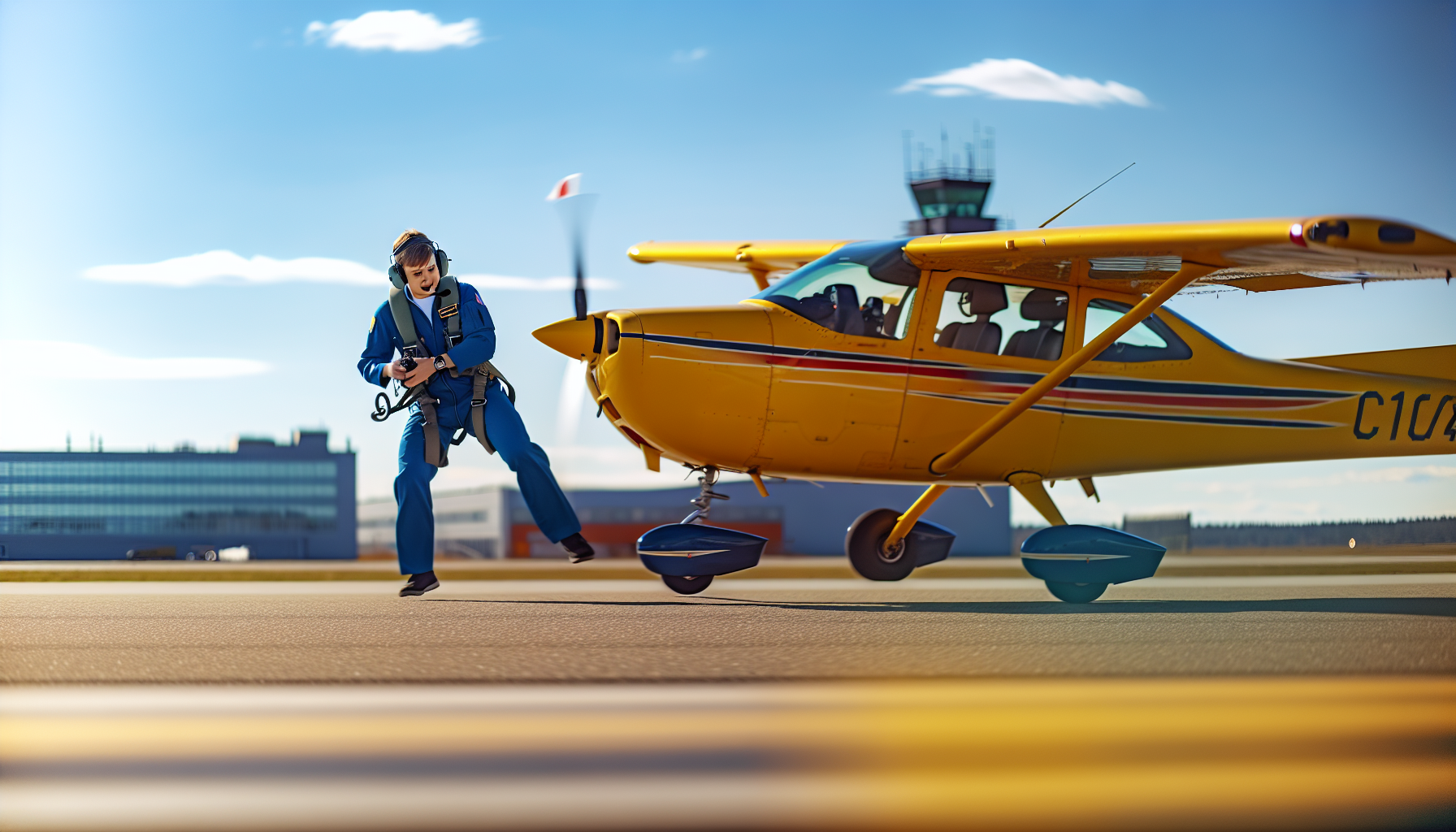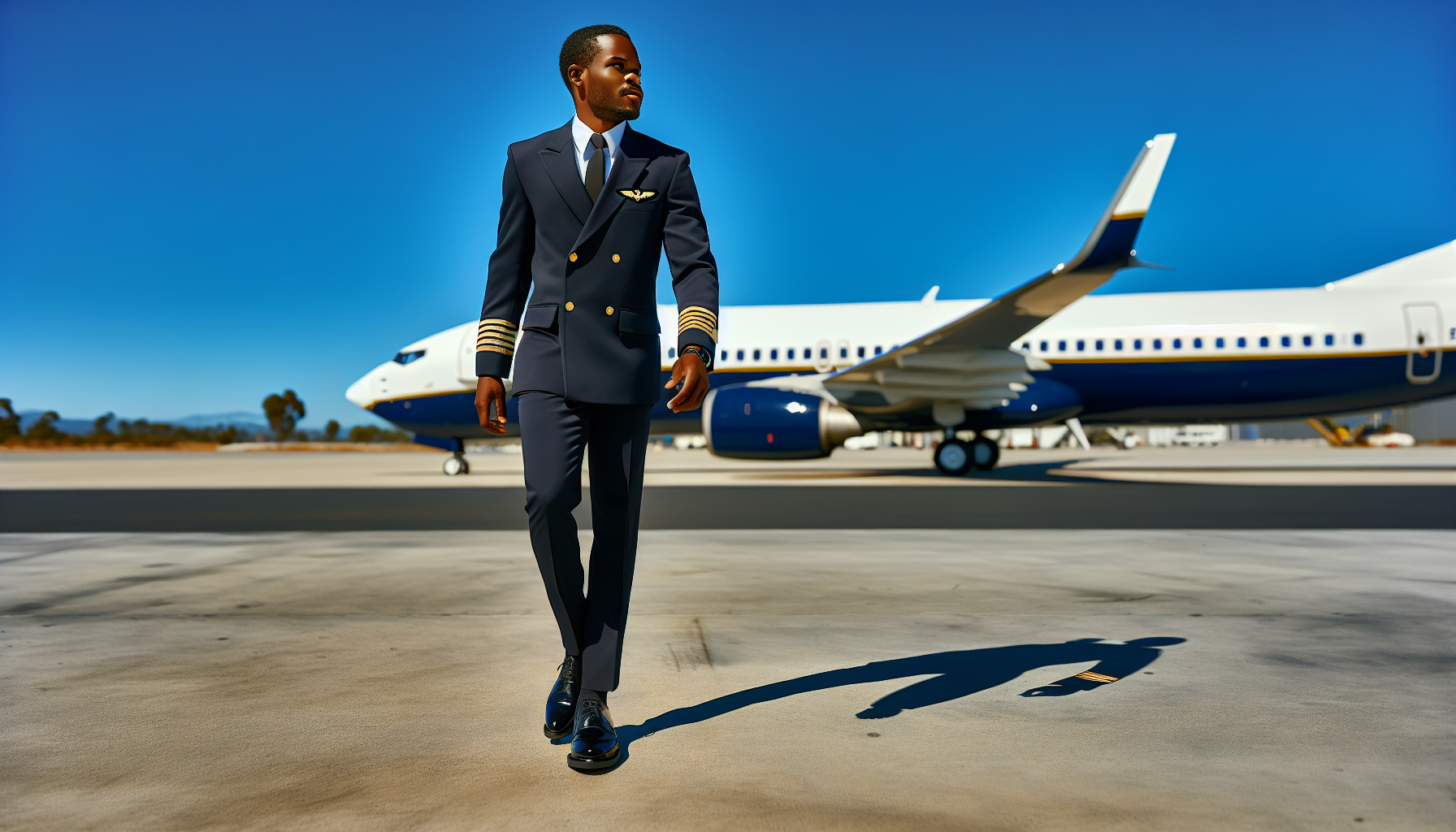How Long Does It Take to Get a Commercial Pilot License?
Feb 09, 2024
Embarking on the journey to become a commercial pilot is an exciting and rewarding pursuit. As you navigate the skies of flight training, obtaining the necessary certifications, and building flight hours, you may wonder, “how long does it take to get a commercial pilot license?” In this comprehensive guide, we’ll provide you with essential information and insights to help you successfully navigate each step of the process and overcome any challenges you may encounter along the way.
Key Takeaways
-
The path to becoming a commercial pilot requires dedication, hard work, and the right training.
-
Flight schools offer full-time or part-time programs that can take anywhere from 7 months to 4 years depending on individual progress.
-
Overcoming challenges in pilot training takes determination, resilience and setting achievable goals for success.
The Path to a Commercial Pilot License

The road to becoming a commercial pilot involves obtaining various licenses and certificates. The process includes:
-
Acquiring a student pilot certificate, which allows you to start flight training at a flight school.
-
Obtaining a private pilot license.
-
Obtaining an instrument rating.
-
Finally, obtaining a commercial pilot certificate.
Each stage of the process requires dedication, hard work, and a passion for flying.
We will now detail each step of the process.
Private Pilot License
The first milestone on your journey to becoming a commercial pilot is obtaining a Private Pilot License (PPL). This license allows you to fly small, private piston aircraft but is not sufficient for commercial operations. To acquire a PPL, you’ll need a minimum of 40 flight hours, including 20 hours with an instructor and 10 hours of solo flight.
Typically, this step takes 2-4 months to finish, providing the necessary foundation to build your skills and experience as you aim to become a pilot and eventually a commercial pilot.
Instrument Rating
After obtaining a PPL, your next step is to acquire an Instrument Rating. This certification is crucial for pilots aspiring to work for major airlines. To obtain an Instrument Rating, you must:
-
Possess a private pilot certificate
-
Demonstrate English proficiency
-
Complete ground school training
-
Log 50 hours of cross-country time as pilot in command
This qualification qualifies you to operate under instrument flight rules and in Class A airspace.
This stage also necessitates 40 hours of actual or simulated instrument flight time, including 15 hours of instruction from a certified flight instructor in instrument (CFII). This stage generally requires around 50 hours to finish.
Commercial Pilot Certificate
The final step in your pilot training journey is obtaining a Commercial Pilot Certificate. To be eligible for this certificate, you must:
-
Be at least 18 years old
-
Possess a valid second-class FAA Medical Certificate
-
Have a private pilot certificate
-
Be fluent in English
-
Complete the required training and log hours for single-/multi-engine land class rating requirements (150 to 250 hours of piloting time), which is essential for commercial pilots.
After passing an aeronautics written test of 105 questions and successfully completing the FAA oral and flight tests, you’ll be qualified to fly for various vocations, such as crop dusting, cargo, and aerial photography.
Timeframe for Obtaining a Commercial Pilot License

The duration it takes to obtain a commercial pilot license depends on various factors, including the type of training (full-time or part-time) and your individual progress. Remember, each person’s journey is unique. Concentrate on enhancing your skills and knowledge at a pace that suits your learning style.
Full-Time Training
If you’re able to dedicate yourself to full-time training, you can potentially obtain a commercial pilot license in as little as 7-12 months. Full-time training programs typically involve attending a training center from 8 am to 5 pm, Monday through Friday. Such a schedule helps you swiftly complete the required training and polish your skills faster than part-time training.
Part-Time Training
If you’re unable to commit to full-time training, part-time training offers a more flexible option. Part-time training usually takes between 2-4 years to complete all requirements for a commercial pilot license. While this extended timeframe may seem daunting, it allows you to balance your training with other life commitments, such as work or school.
Individual Progress
Your individual progress plays a significant role in determining the timeframe for obtaining your commercial pilot license. Factors such as dedication, aptitude, and availability can all impact the duration of your training. Remember, each individual’s journey is unique, and there isn’t a universal approach to pilot training.
Focus on developing your skills and knowledge at a pace that works best for you while remaining committed to your goals.
Flight Training Requirements

To become a commercial pilot, specific flight training requirements must be met at each stage of the process. These requirements include minimum flight hours for private pilot license, instrument rating, and commercial pilot certificate. Understanding these requirements and ensuring you are meeting them as you advance in your training is vital.
Private Pilot License Hours
The Federal Aviation Administration (FAA) requires a minimum of 40 flight hours to obtain a Private Pilot License. This requirement includes 20 hours of flight instruction with a flight instructor and 10 hours of solo flight time.
As you work towards your PPL, focus on improving your skills and knowledge to be ready for the subsequent steps in your pilot training journey.
Instrument Rating Hours
To obtain an Instrument Rating, you must have 50 hours of cross-country flight time as pilot in command, with at least 10 hours spent in actual or simulated instrument conditions. This requirement ensures that you’re prepared to fly under instrument flight rules and in Class A airspace, which is a crucial skill for pilots pursuing a career with major airlines.
Commercial Pilot Certificate Hours
The minimum flight hour requirement for a Commercial Pilot Certificate is 250 hours. This requirement includes a combination of solo flight time, flight training time, and other FAA-mandated flight training. While this may seem like a significant number of hours, it’s essential to remember that each hour spent in the air is an opportunity to hone your skills and gain valuable experience that will serve you well in your career as a commercial pilot.
Choosing the Right Flight School

Selecting the right flight school is a crucial decision in your journey to becoming a commercial pilot. Several factors should be considered when choosing a flight school, including accreditation, experienced instructors, and budget.
A careful evaluation of these factors will help you choose a flight school that will offer optimal training and support throughout your pilot training journey.
Accreditation and Reputation
Accreditation and reputation are important factors to consider when selecting a flight school. Attending an accredited flight school ensures that the institution meets high safety and educational standards, which is crucial for your success as a pilot. A good reputation indicates that the flight school has a track record of providing high-quality training and producing skilled pilots.
When assessing flight schools, take into account their accreditation status and reviews from former students to make an optimal choice.
Experienced Instructors
Having experienced instructors is essential for your success as a pilot. A knowledgeable and skilled instructor can provide valuable guidance and support throughout your training, helping you develop your skills and overcome any challenges you may face.
Consider the qualifications and experience of the instructors when assessing flight schools to receive the highest quality training.
Budget Considerations
Budget is another important factor to consider when selecting a flight school. Flight training can be expensive, so it’s crucial to find a school that offers high-quality training at a price you can afford. When evaluating flight schools, consider tuition costs, living expenses, and any additional fees that may be associated with the training.
Considering these factors will help you choose a flight school that fits your budget and offers the highest return on your investment.
Building Flight Hours

Building flight hours is important for your success as a commercial pilot as you advance in your career. There are several ways to accumulate flight hours, including working as a flight instructor, banner towing, and flying for regional airlines. Each of these opportunities offers unique benefits and experiences, allowing you to develop your skills and gain valuable flight time.
Flight Instructor Jobs
Working as a flight instructor offers several benefits:
-
It allows you to build flight hours while teaching others.
-
You can fly up to eight hours a day, which helps you gain more experience.
-
It provides an opportunity to hone your skills in various flying scenarios and environments.
Working as a flight instructor also helps hone your communication and teaching skills, beneficial for your career as a commercial pilot.
Banner Towing
Another option for building flight hours is banner towing. This unique flying experience allows you to accumulate flight hours while towing banners or advertising signs behind your aircraft. Although banner towing may not contribute significantly to the development of advanced piloting skills, it does provide an opportunity to gain additional flight time and experience in a variety of flying conditions.
Regional Airline Opportunities
Flying for regional airlines offers pilots:
-
An opportunity to build flight hours while working for smaller airlines
-
A structured career progression path
-
Valuable experience
-
Connections within the aviation industry
-
A chance to work towards their ultimate goal of becoming a commercial airline pilot.
Overcoming Challenges in Pilot Training
Pilot training can be challenging, but with determination, resilience, and a willingness to learn from setbacks, you can successfully navigate the path to becoming a commercial pilot. We will now discuss strategies to overcome challenges in pilot training, including managing work and training, maintaining motivation, and handling setbacks.
Balancing Work and Training
Effective time management and prioritization are essential for balancing work and training. By setting a consistent schedule, prioritizing tasks, and creating a plan that allows for dedicated study and training time, you can successfully manage the demands of both your work and pilot training.
Staying Motivated
Maintaining motivation throughout your pilot training journey is crucial for your success. Setting achievable goals, rewarding yourself for your achievements, and maintaining a positive attitude can help keep you motivated and focused on your ultimate goal of becoming a commercial pilot.
Dealing with Setbacks
Resilience, determination, and a willingness to learn from mistakes are key to dealing with setbacks in pilot training. When you encounter a setback, acknowledge it, take responsibility for it, and seek support from other pilots or mentors.
Focus on the lessons learned from the setback and use it as an opportunity for growth, ensuring that you emerge stronger and more prepared for the challenges ahead.
FAA Regulations and the 1500-Hour Rule
The Federal Aviation Administration (FAA) requires airline transport pilots to have a minimum of 1500 flight hours and an Airline Transport Pilot certificate, also known as an airline transport pilots license, to work for commercial airlines in the United States. This regulation, known as the 1500-Hour Rule, ensures that pilots have the necessary experience and skills to handle the responsibilities and challenges of flying for commercial airlines.
Summary
In conclusion, obtaining a commercial pilot license is a rewarding and achievable goal with the right training, dedication, and perseverance. By carefully selecting a flight school, building flight hours through various opportunities, and overcoming challenges along the way, you can successfully navigate the path to becoming a commercial pilot. As you take to the skies in pursuit of your dream, remember to stay focused, remain motivated, and embrace the journey, knowing that each step brings you closer to your ultimate goal.
Frequently Asked Questions
How quickly can you become a commercial pilot?
Becoming a commercial pilot generally requires 3-4 years of study in an accredited flight school, 10-24 months to complete flight school training, and 12 months to get your Commercial Pilot License, with a minimum of 250 logged flying hours. There are accelerated programs which can help reduce the time it takes to gain experience and meet qualifications to as little as two years.
How hard is it to get a commercial pilot license?
Getting a commercial pilot's license requires significant time, dedication, and commitment - typically around 250 hours of flight time and more advanced training. It's not an easy task, but it is achievable with the right amount of hard work and dedication.
How long do you have to fly to get a commercial pilot certificate?
To qualify for your commercial pilot license, you must have logged 250 hours of flight time with 100 of those hours in powered aircraft and 50 in airplanes. This is the minimum requirement set by the Federal Aviation Administration (FAA). However, few, if any, airlines use this amount as their own minimum standard - they may require 1,000 or 2,000 hours or more.
What methods are available for building flight hours?
There are multiple ways to increase flight hours, including becoming a flight instructor, engaging in banner towing, and pursuing regional airline positions. All of these offer unique experiences for aspiring pilots.
How can I balance work and flight training?
Effective time management, creating a consistent schedule, and setting clear priorities can help you balance work and flight training so you can make progress without sacrificing your wellbeing.
